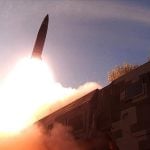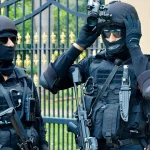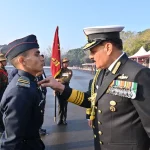The Indian Air Force (IAF) plays a crucial role in the country’s defense strategy, ensuring air superiority and operational readiness. A pivotal position within the IAF is that of the Air Chief Marshal (ACM), who oversees air operations and serves as a primary military advisor to the government on aerial strategy. Naturally, such a significant role comes with considerable responsibilities and a compensation package that reflects the high stakes involved. Understanding the salary of the Air Chief Marshal not only sheds light on the financial aspects of military leadership but also offers insights into how the Indian government values its defense services.
To put the financial remuneration of the Air Chief Marshal into perspective, we will explore various factors influencing their salary structure, compare it with similar positions within the armed forces, and contemplate the future trajectory of such compensation packages.
Historical Context
The role of the Air Chief Marshal has evolved significantly since the formation of the Indian Air Force in 1932. Initially, the salary structures of military personnel were relatively modest and largely determined by British military standards. Over the decades, and particularly after India’s independence, those standards were replaced with more localized structures that reflect the nation’s sovereignty and requirements.
In the early years, post-independence, the Indian Armed Forces struggled with limited budgets and resources. However, as the nation progressed, financial allocations for defense began to grow, particularly following conflicts like the 1962 Sino-Indian War and the 1971 Indo-Pakistani War. With these changes, military remuneration, including that for the Air Chief Marshal, saw a steady increase, aligning with the evolving needs of national security.
The Salary Structure of the Air Chief Marshal
The salary of the Air Chief Marshal is primarily determined by the 7th Pay Commission, substantially reshaping the financial stipulations for defense personnel. Here are the key elements that make up the monthly remuneration of the Air Chief Marshal:
Basic Pay
The basic pay of the Air Chief Marshal stands at approximately ₹2,50,000 per month. This figure is classified under Pay Level 18, the highest category prescribed by the 7th Pay Commission for senior-most officers in the armed forces. It’s important to note that this figure may slightly vary based on various interpretations by different sources, but it consistently averages around this amount.
Military Service Pay (MSP)
In addition to the fixed basic pay, the Air Chief Marshal also receives a Military Service Pay (MSP) of ₹15,500. This allowance is designed to compensate for the unique challenges and risks that come with serving in the military, effectively incentivizing personnel to remain committed to their roles amid demanding conditions.
Total Salary
When factoring in allowances, the total monthly salary for the Air Chief Marshal can range from ₹2,50,000 to ₹3,00,000. This total may include several administrative benefits such as:
- House Rent Allowance (HRA): Based on the city of posting, this allowance compensates personnel for housing expenditures.
- Dearness Allowance (DA): This allowance is given to mitigate the impact of inflation. The percentage fluctuates based on the Consumer Price Index.
- Transport Allowance: Compensation for travel expenses incurred for maintaining operational readiness and personal commutes.
- Performance-Linked Benefits: Additional perks tailored to operational and performance incentives.
Additional Benefits
The role of Air Chief Marshal comes with numerous benefits aligned with the high responsibilities inherent in the position. These include:
- Government Accommodation (or HRA): Depending on whether an official residence is provided, the Air Chief Marshal either receives accommodation from the government or an allowance to cover housing costs.
- Transport and Healthcare Facilities: As an Air Chief Marshal, numerous transport privileges ensure mobility, while comprehensive healthcare services extend to the officer and their family.
- Pension Provisions: A robust pension scheme guarantees security post-retirement, reflecting the government’s commitment to its servicemen.
Comparative Analysis: Air Chief Marshal vs. Other Military Heads
The salary package for the Air Chief Marshal is designed to reflect parity with the Chiefs of the Army Staff and the Navy. This equivalence is intentional, ensuring that all heads of India’s armed forces receive comparable financial recognition, underlining the interconnected nature of their roles and responsibilities.
- Chief of Army Staff and Chief of Naval Staff: Generally, their salaries are on par with the Air Chief Marshal, aligning closely within the same pay structure. This equal pay framework fosters a sense of unity and shared purpose among the military branches.
Statistical Data and Research Insights
Understanding the compensation that the Air Chief Marshal receives sheds light on broader discussions surrounding military remuneration in India. A significant factor to consider is how the financial aspects adapt to the country’s economic framework and how they ensure the retention of qualified personnel within the forces.
- According to government data, approximately 2.5% of India’s GDP was allocated to defense spending in 2023, reflecting an increase aimed at addressing the nation’s strategic needs. This trend indicates that salaries and allowances will likely see further adjustments in response to inflation and fiscal policies.
Challenges and Solutions
Despite the relatively high salaries and benefits, the Indian Air Force, and its leadership, face various challenges:
- Retention of Personnel: One of the significant pressures within the IAF is the retention of skilled officers in a competitive job market. The financial package, while attractive, often competes with lucrative options in the private sector.
- Public Perception: The need for transparent and acceptable remuneration packages becomes essential, especially in a democracy like India. Addressing public concerns about the appropriateness of military pay against other professions is crucial.
Proposed Solutions
- Enhanced Career Progression: Offering clear pathways for career advancement and professional development can make military careers more appealing.
- Public Engagement: Conducting campaigns to educate the public on the roles and challenges faced by military personnel might foster greater appreciation and support for their financial packages.
Future Trends and Predictions
The outlook for the salary and compensation structures for military personnel is likely to evolve as economic conditions change and demographic factors come into play. Key considerations for the future include:
- Increased Budgets: With ongoing geopolitical tensions and the growing need for modernized equipment, military budgets are expected to rise, potentially resulting in better pay for senior officers.
- Policy Reforms: Ongoing reviews like the 8th Pay Commission might lead to further adjustments, aligned with rising living costs and inflationary pressures.
- Greater Digital Integration: The incorporation of technology into defence operations may necessitate re-evaluating the skill sets and responsibilities of military leaders, potentially leading to new salary structures that reflect innovative capabilities.
Conclusion
The salary of the Indian Air Force Chief encapsulates the broader challenges and responsibilities associated with senior military leadership. With a monthly compensation structure that includes a fixed salary, military service pay, and a multitude of allowances, the position of Air Chief Marshal is financially aligned with its critical role in national security. Moreover, the salary framework not only reflects the Indian government’s recognition of the importance of its air capabilities but also parallels the compensation packages of other armed forces’ leaders, ensuring equity within management.
As the Indian defense sector continues to evolve, it will be essential to remain vigilant about how financial policies adapt to challenges and capabilities concerning personnel retention, public perception, and the dynamic geopolitical landscape. The government’s ability to refresh and modernize its compensation models will reflect its commitment to those who serve and protect the nation in its skies. Ultimately, recognizing the efforts and sacrifices of figures like the Air Chief Marshal is vital in fostering a strong and capable military force for future generations.













